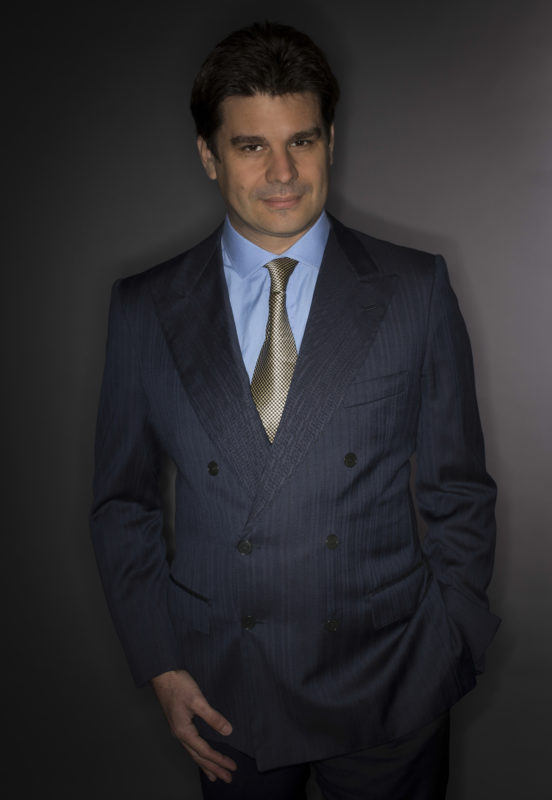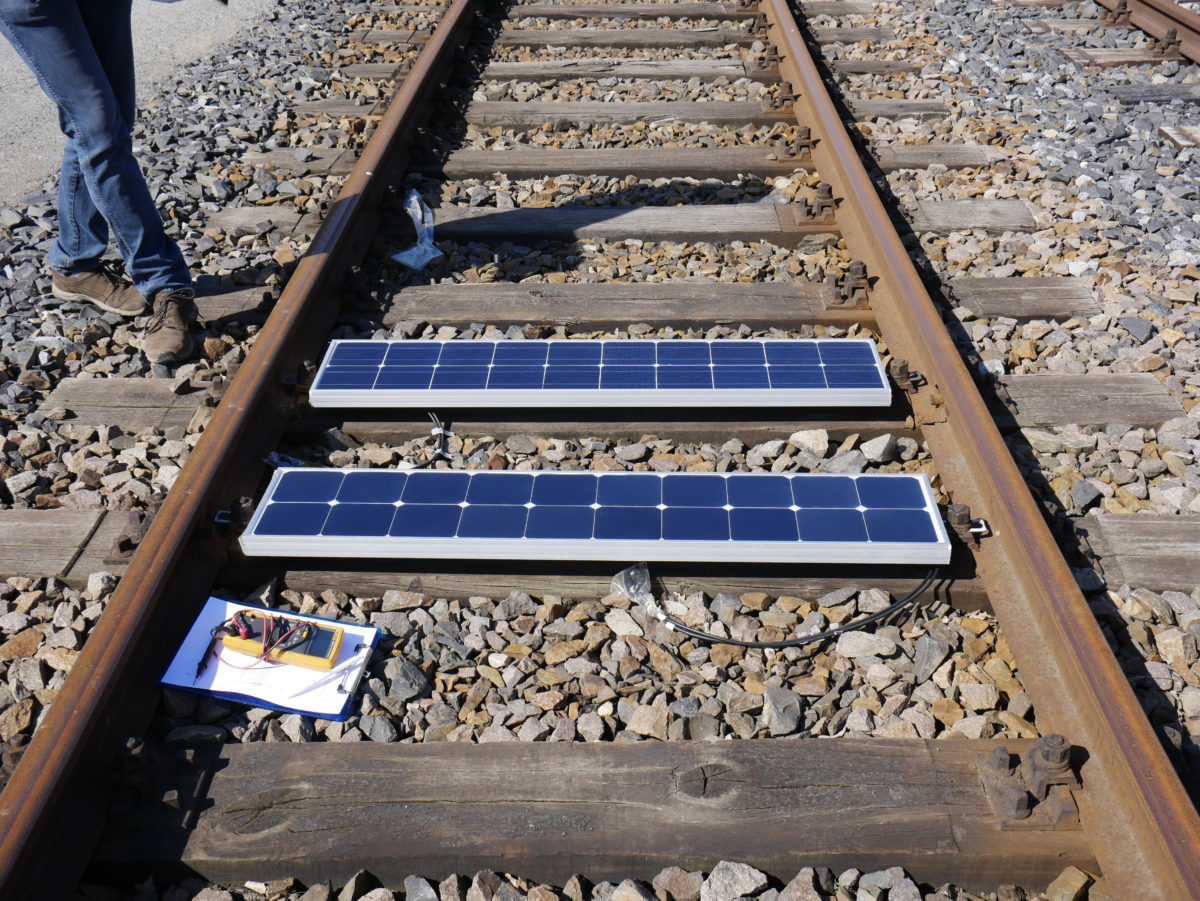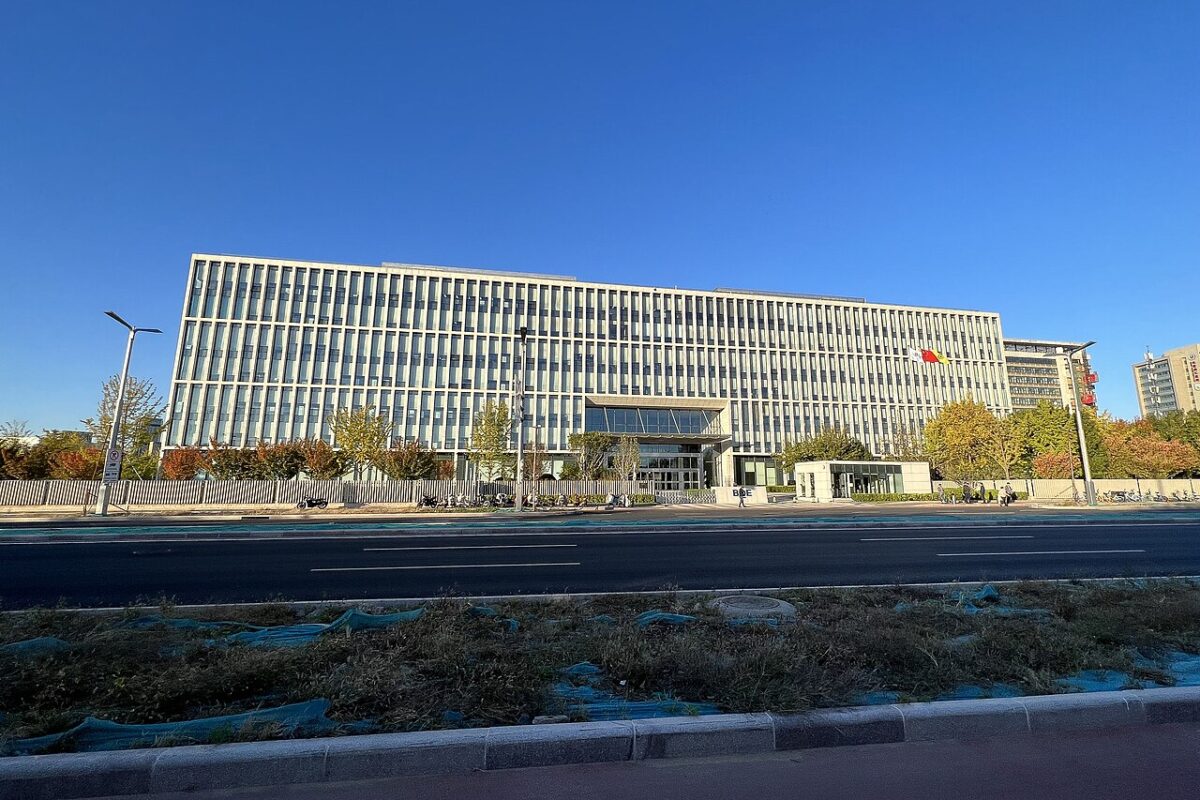The U.K. renewable energy investor says it plans to cover the world’s railway network system – said to be over one million km long when added together – with solar PV panels.
Bankset Energy began its journey in Bern, Switzerland, on private industrial track connected to the SBB/CFF track; and started installing 200 MW worth of panels on 1,000 km of rail track in Saxony, Germany, in June. The latter is set to be completed in 2019, and extended to 10,000 km by 2022.

Image_ Bankset Group
The company is also working on projects in the United Kingdom, France, the United States, China and Italy; and is gearing up for more in Austria and Spain, Bankset Group president, Patrick Buri, tells pv magazine, adding that either Bankset Rails Group installs the projects, or it works with several rail specialists, such as Sersa Rail Group.
Regarding project times, Buri says that if the line is completely closed, “we can install 1,000 km in one to four months.”
“Using patented technology, solar panels made of silicone and aluminium are designed to clip over existing railway sleepers. These are currently made from concrete, wood and steel – proven technologies that have stood the test of time,” read a statement from the company on the technology.
It continued, “The Bankset Energy System transforms the existing technology into a cutting edge energy system, without affecting the infrastructure and avoiding the cost of replacing existing sleepers.”
Buri says Bankset uses solar cells manufactured from an unidentified producer in California, United States, while the Bankset Energy solar panel system is assembled in Europe in two manufacturing centers. “We also have a manufacturing center in Asia – China – but Bankset Energy is designed by Bankset Energy Group in Switzerland and the U.K.,” he says.
Bankset is also said to be in discussions with a number of sleeper manufacturers to develop the technology and adapt its product to fit all existing sleepers. Responding to which companies, specifically, it works with, Buri says, “For rails we work with Deutsche Bahn Systems Technic and TUV, we have many partners for rails and solar. We also work with Plasser & Theurer.”
Development of the technology in European factories started back in 2013, says Bankset, with €10 million in financing provided by Bankset Investments Ltd, Bankset Energy Ltd and other, unidentified, public and private investors, mainly from the United Kingdom and the United States. Another €300 million is set to be raised in a further financing round.
Buri says that the new financing is ongoing, with most of the initial funds already secured. He adds, “We are looking at new investors now and talking to the largest equity and capital markets.”
Business models
Responding to how the generated solar electricity will be sold, Patrick Buri outlined a number of different, potential, business models. These include:
- The electricity goes business to business into the train station;
- The electricity goes business to consumer into the houses / residences near by;
- The electricity goes to the overhead line to power the train;
- The electricity produced goes to batteries to power machines or the new Bombardier train has batteries (further research and development is under way in the U.K. with Network Rail, Bankset and Bombardier); or
- The electricity goes into the national or local grid network.
He added, “The electricity is sold to the grid for the moment in Germany , Switzerland and UK. Some electricity is also used for local use and tests at the rails system. The extra is sold to the grid or a local business. We also charge batteries and provide
light and other experiments with trains and grid or business.”
The nitty gritty
Asked whether the modules will be specially designed to endure the stresses of trains traveling over them, Buri replied that rail networks are divided into three distinct categories: (i) slow rails and parking rails, where there is “no particular stress”; (ii) medium speed secondary lines, where “Bankset energy solar panels are adapted and very resistant. There have been no problems to date; our glass is reinforced and has passed the most stressful tests”; and (iii) high speed lines, where “a very resistant panel is available and offered for all kinds of stress and problems also tested for rails ballast rocks and ice or wind resistant. No major problems, to this end the Bankset Energy solar panel is designed and certified for this purpose precisely.”
In terms of cleaning the modules, Buri says that while most of the cleaning is done by rain, the company also has a special “robot train”, which works with water pressure. “It's super efficient,” says Buri, adding, “when required, we press the button, our robot train arrives and scans the network with a camera, and a water jet system with ecological product cleans the panels as required.”
For operations and maintenance (O&M), Buri says the company offers “Bankset Energy certified programs. Or we install, operate and asset manage the entire power plant for our customers turn key.” He adds, “We supervise all the electricity and for rails, we offer the best machines in the industry from the world leaders in rails maintenance – Plasser & Theurer – and we also use machines from ROBEL Bahnbaumaschinen and Siemens.”
This content is protected by copyright and may not be reused. If you want to cooperate with us and would like to reuse some of our content, please contact: editors@pv-magazine.com.




The electricity can also go to the 3 rd rail as detailed in the Riding Sunbeams report by Dr Nathaniel Bottrell Imperial College,London and Leo Murray charity 10:10 which shows how solar farms outputting at 600-800V DC can be connected directly to the 3 rd rail and overhead cables 750V DC to power trains,the tube and trams in the UK,(and Spain,India,San Francisco and elsewhere).
http://files.1010global.org/documents/Riding_Sunbeams_1010.pdf
10:10 wants community owned subsidy free solar farms to power trains and trams.Since the UK government cut subsidies to renewables,investors can get a better rate of return from a PPA with Network Rail that is in charge of the track in Britain and Transport for London,than from the feed in tariff to the National Grid. Can charities invest in the Bankset Group solar sleepers ?
The Italian company Greenrail has also developed solar,LinkBox (solar panel with sensors) and piezo sleepers,the latter uses the slight downward motion of the sleeper as a train passes over it to generate electricity,(useful in tunnels and for the London Underground) ,15-20% cheaper with half the maintenance costs, made partly from recycled plastic and rubber from old tires. Greenrail has signed agreements with Safepower1 in the US and Indra in Spain.
There is also the Bill Moyer and others Solutionary Rail plan in the USA,to upgrade the track for 125 mph high speed trains,electrify the railways with overhead cables,and install power lines above the track to connect small and large scale solar,wind and hydro including ones owned by Native American tribes to the National Grid.
A solar farm has opened a few months ago,that can power directly using a new type of inverter the Ostbahn eastern railway in Austria.
An old 1949 aluminum class 600 train in Byron Bay,Australia is propelled by pv panels on the roof and the batteries charged at stations from pv`s.
very clever system great innovation this venture deserves all the best. thank you for the great news and more photos to come…
We have the perfect scenario in Australia.
The Ghan stretches from Darwin to Adelaide 5000 k.
This system would work petfectly because this line only has two to four trains a week
The South Australian Government woul be interested I am certain of that. Grant fun d ing is also a consideration